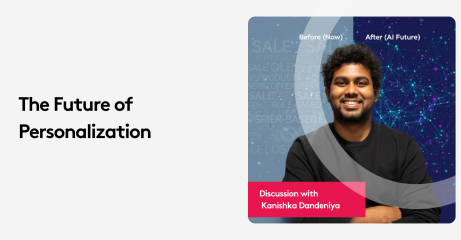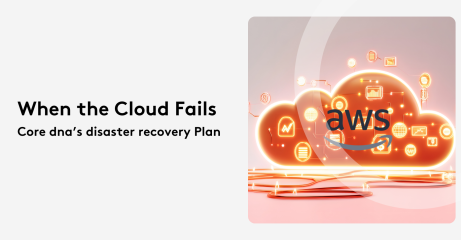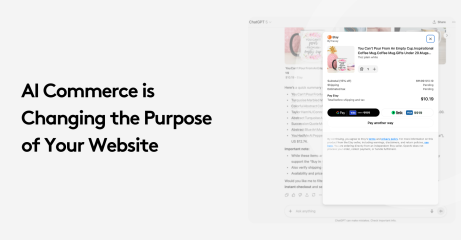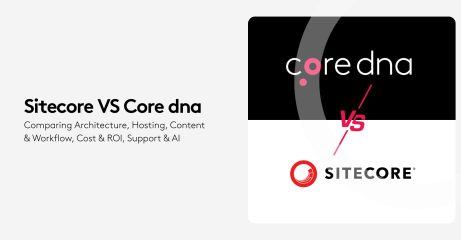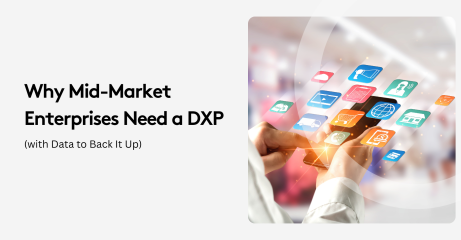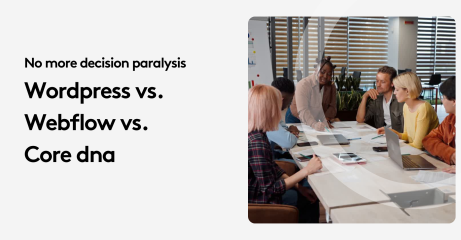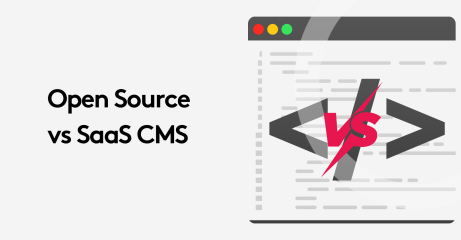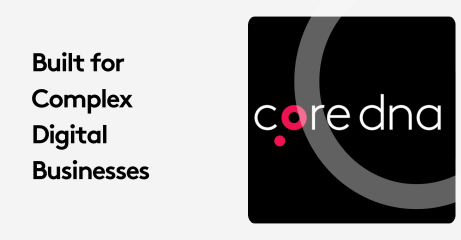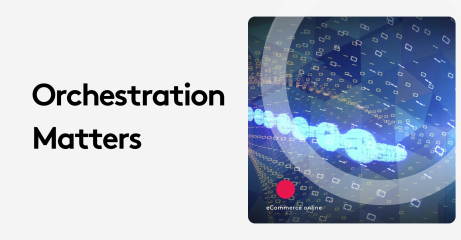How Digital Employee Experience Transforms Workplace Culture
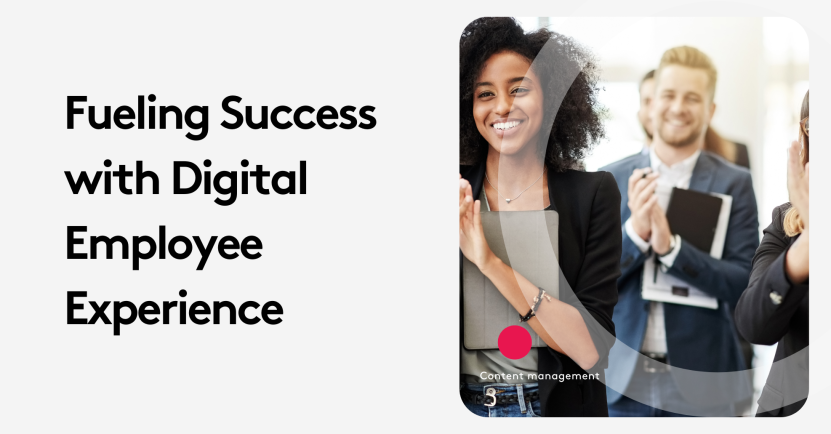
Digital Employee Experience (DEX) is not just about tools; it's about shaping a culture that fosters collaboration and innovation. By optimizing DEX, companies are revolutionizing employee satisfaction, engagement, and productivity.
As technology continues to reshape how we work, Digital Employee experience imposes itself as a core component of meaningful productivity and employee retention.
When approaching a DEX, managers should look at all the digital interactions employees have with their workplace tools, from Zoom to Copilot and let’s not forget the platform to ask for days off. These tools directly influence efficiency, satisfaction, and engagement.
With society shifting to hybrid work environments, digital tools define collaboration,.
A strong DEX doesn't just streamline workflows—it fosters a culture of innovation, reduces friction, and empowers employees to thrive.
Companies that prioritize it aren’t just enhancing productivity; they’re building workplaces of the future. Dive in to explore how DEX is shaping the modern work experience and transforming businesses worldwide.
Key takeaways
- DEX Shapes Culture: A strong Digital Employee Experience (DEX) fosters collaboration, innovation, and a workplace culture that drives engagement and productivity
- Beyond Tools: DEX isn’t just tech—it’s about every digital interaction, from Zoom to HR platforms, impacting efficiency and satisfaction.
- Hybrid Work Essential: In remote and hybrid setups, DEX ensures seamless communication and collaboration across global teams.
On this page:
What is digital employee experience?
Digital employee experience refers to the employees journey when interacting with technology at work. It encompasses an employee's entire digital workplace, from their work device(s) to the applications and networks they rely on and the end-user sentiment.
According to Gartner, only 5% of IT organizations had established a digital employee experience strategy, team, and management tool as of 2021. The good news is that with more businesses recognizing DEX has tremendous value, that number is projected to increase dramatically, up to 50% by 2025.
As business becomes increasingly global and work becomes remote, DEX ensures employees can seamlessly communicate and collaborate with their teams.
While the information technology (IT) team ensures an organization’s digital workplace operates smoothly, DEX has implications throughout the business. It ties into human resource strategies, digital transformation efforts, and corporate culture.
The digital employee experience begins the moment an employee begins working at a company and continues throughout their tenure.
In the modern, digital-first era of work, employee digital experience management influences employees’ entire experience with a company and can have implications for productivity, retention, employee development, and engagement.
With every company seeking a competitive edge, none can afford to ignore the value of providing a high-quality digital employee experience.
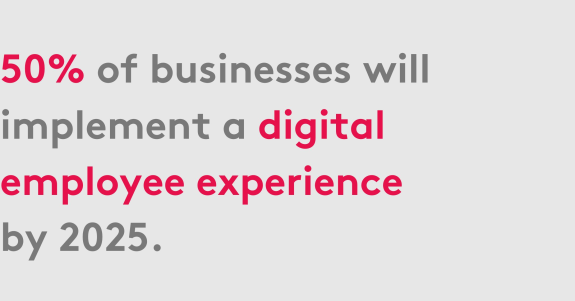
The different types of digital employee experiences
DEX is composed of many different interactions employees have daily with technology. Examples include logging onto the computer, opening and responding to emails, and attending conference calls.
Let's examine the different digital employee experiences that workers face regularly.
- Communication and employee collaboration tools
The most common digital employee experiences are the systems and applications workers use to interact with coworkers. These include email, instant messaging tools such as Slack and Microsoft Teams, phone calls, and video conferencing services, including Zoom and Skype.
- Workflow and productivity software
Nearly every business division now relies on specialized technology to help them work more efficiently. The sales team has Salesforce, marketing has content management systems, and legal teams have contract management tools, to name a few.
- Human resources, talent management, and training systems
The most significant HR trends are all about data and digitizing the industry. Employees need access to their company's workforce management system to review compensation, benefits, and PTO information. Corporate training and professional development are increasingly conducted in remote environments as well.
- IT support and self-service capabilities
When digital tools act up, employees must be able to access self-service resources to troubleshoot the problem. If that fails, they need the option to submit support tickets, a crucial option for remote workers who can't walk over to the IT desk.
What makes a Great Digital Employee Experience
When thinking about designing the employee digital experience within a company, we have to take into account all aspects of the employees daily work life. These projects are usually driven by HR teams who want to create a comprehensive ecosystem within the company for all employees.
But let’s not forget that DEX can also look different depending on departments/managers etc but the overarching experience should fit within the lines of the general strategy.
These 4 elements are usually at the core of successful digital employee experience software implementation:
User Interface (UI) and User Experience (UX)
We are spoiled with great user experiences from our mobile apps to connected fridge. It is not surprising that employees have come to expect the same level of seamless interactions with tools they use at work.
Monday.com, Slack and Otter are all tools that make our work life easier, more productive and are so easy to use.
When investing in DEX technologies, user-friendly digital employee experience software plays a crucial role in minimising frustrations and will guarantee higher adoption rate and productivity.
Personalization and Customization
As mentioned earlier, satisfactory digital Employees digital experience can look different for each department, role or even personally.
Digital tools that can be personalized and customized allow employees to adapt their technology to their specific tasks, whether it’s a dashboard highlighting key metrics or software that integrates seamlessly with their daily processes. Again we are thinking Monday.com, notion and other tools that give some freedom to employees to make it theirs.
Flexibility and empowerment will allow teams to work more efficiently and increase employee productivity.
Support and Training
When introducing new tools, employees need access to resources that help them understand and maximize the tools at their disposal. Offering a digital employee experience software with built-in training resources ensure higher adoption.
Planning training sessions and having a support channels dedicated to employees for questions will make the transition smoother and increase employee engagement.
The Power of Integration
While this is true for almost any SaaS platform, the need to create an integrated ecosystem is crucial to the overall success of any project.
The tools that are at the disposal of employees need to integrate seamlessly between them when necessary to streamline operations and increase employee productivity.
The benefits of a great digital employee experience
Technology will continue advancing rapidly, and businesses must adapt to modern innovation. Delivering high-quality DEX future-proofs your organization by introducing cutting-edge technology and ensuring employees develop the skills needed to stay productive.
Other benefits of creating an excellent digital employee experience include the following:
- Improve collaboration
With remote work becoming more integrated in our work style and offices spread across the globe, employees need technology that enhances communication. Modern technology allows for asynchronous collaboration, ensuring employees are on the same page no matter where they are, and that work is completed efficiently.
- Greater employee satisfaction
Most people use technology outside of work, whether its to communicate with friends and family, creating social posts or even managing their activities calendar. When we come to work, we expect our devices and software to work as seamlessly as those we use in our downtime. Minimizing disruptions keeps employees engaged and productive, which is good for them and your customers and can help increase employee retention.
- Better customer service
In the post-pandemic world, organizations that can thrive in a remote environment will have a real competitive edge. Not only will a remote-first culture ensure you use cutting-edge technology, but it will also help you attract the highest-quality talent. Combined, you can deliver faster, better service to your customers.
- More human HR
Some HR trends may come and go, but one thing stays certain: the better the employee experience, the more likely they will remain. Every HR process must be seamless, whether you are onboarding new employees, facilitating position changes and promotions, introducing new devices, or helping employees move.
- Recruit the best talent
Prospective employees do their homework before interviewing with your company. They want to know your organization is an excellent place to work, which is why DEX must be an integral part of your overall business strategy. Happier employees make recruiting easier while lowering attraction rates among your most valuable workers.
How a CMS Helps Shape the Digital Employee Experience
A CMS (Content Management System) might sound like a techy term, but at its core, it’s a tool that helps organizations manage and organize content—whether it’s company policies, training materials, or even internal communications.
Think of a CMS as the digital backbone that enables you to easily create, edit, and publish content within a centralized platform. And when it comes to creating an exceptional Digital Employee Experience (DEX), a content management system can be the key to building a user-friendly intranet that enhances how employees interact with the workplace.
So, how does a CMS help HR build and manage an intranet that supports the employee experience? Here's how:
Building an Intranet That Works for Employee
At the heart of a great DEX is a well-organized intranet. Why? because it centralizes information for employees and makes it accessible. A CMS helps HR teams build this intranet by acting as a platform where all the important content can be stored, updated, and accessed easily.
Whether it’s training materials, benefits guides, or internal announcements, a content management system gives HR a simple, intuitive interface to upload and manage all this information in one place.
Employees can log into the intranet and quickly find what they need, saving time and improving productivity. This centralized, easy-to-navigate space is a foundational part of a positive DEX.
Personalizing the Intranet Experience
One of the most powerful features of a content management software is its ability to personalize content based on different employee needs. With a content management system, HR can customize what employees see based on their roles, departments, or specific tasks.
For instance, a sales team member might see the tools they need to access to track sales performance dashboards and client resources right on their homepage, while someone in HR might be greeted with onboarding resources or the latest company policy updates.
By offering a personalized experience, the CMS ensures employees can quickly access the resources that are most relevant to them.
Empowering HR to Streamline Internal Communication
A CMS doesn’t just store content—it allows HR teams to communicate more effectively with employees. HR can use the CMS to share company-wide announcements, updates, or internal news, ensuring everyone stays in the loop.
Additionally, HR can create sections for specific teams or projects, making it easier for employees to access the right information at the right time. Whether it’s a new policy update, a wellness program launch, or a leadership change, HR can instantly publish content that reaches employees across the organization.
Automating HR Processes Within the Intranet
A big part of creating a smooth employee digital experience is automating repetitive tasks. A CMS helps HR teams do just that by allowing them to automate processes like document approvals, performance review cycles, and benefits enrollment.
For example, when a new employee joins, the CMS can automatically direct them to the necessary training materials, assign tasks, and track their progress. Similarly, HR can automate employee requests for time off or document updates.
This reduces manual effort, minimizes errors, and ensures a smoother experience for employees and HR alike.
Supporting Continuous Training and Development
Employee learning and development are essential to maintaining a positive DEX, and a CMS can be the perfect platform for managing training programs. HR can use the CMS to host e-learning modules, track employee progress, and deliver up-to-date training resources.
Whether it's compliance training or professional development courses, the CMS can centralize all learning content, making it easy for employees to access and complete. HR can also integrate features like progress tracking, feedback loops, and certification management, helping employees feel supported in their growth journey.
Fostering Collaboration and Connection
One of the challenges of remote or hybrid work is keeping employees connected. With a CMS-driven intranet, HR can build collaborative spaces where employees can interact, share ideas, and provide feedback.
Forums, internal social networks, and project management tools can all be integrated into the intranet, allowing employees to connect and collaborate seamlessly.
This not only improves communication but also strengthens company culture by making employees feel like they are part of a larger team, no matter where they are working from.
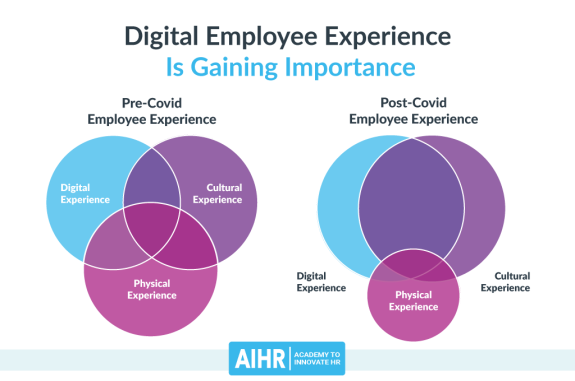
Why invest in a Digital Employee Experience (DEX)
Investing in a strong Digital Employee Experience (DEX) offers transformative benefits for organizations, directly impacting performance, satisfaction, and talent acquisition.
Increased Employee Productivity
Platforms that are easy to use and just do the job right will create a positive DEX. For example, using a drag and drop CMS instead of having to code content will increase productivity by 60% and empower non technical marketers to be in charge of the business’ digital presence.
It’s a package deal: intuitive interfaces, seamless integrations, and personalized workflows. This is the secret of a successful DEX.
Employee Satisfaction and Retention
Technology should be used as a way to foster supportive and motivating work environments.
With hybrid work becoming a part of our reality, the need to onboard employees remotely and create a sense of a community without physical location is constantly increasing.
By optimizing your employee digital experience, you will impact employee engagement and can 21% greater profitability and 59% lower turnover - Gallup.
Attraction of Top Talent
Today’s, employees are driven by technology and preference. The MAC vs PC groups are present in every companies
A robust digital employee experience platform can be a powerful recruitment tool. Organizations that offer modern and user-friendly tools are seen as innovative and committed to employee success which is a great argument for prospective employees.
By enhancing DEX, organizations not only improve operational outcomes but also create a workplace culture that supports growth and innovation
Challenges in Implementing Digital Employee Experience Software
A well designed Digital Employee Experience ecosystem takes a lot of work, research and constant iterations.
There are a few challenges to consider but these obstacles just require strategic planning and good digital employee experience management.
Change Management
One number says it all, 70% of organizational change initiatives fail due to employee resistance and lack of management support.
Managing change is as important as crafting your DEX. Putting employees at the center of your DEX will help you understand their needs and involving them in the transition process will ease the adoption process.
Keep the communication open, organize product demonstrations, be open to feedback, and provide hands-on training.
Integration with Existing Systems
Always involve your IT team early in the conversation. Their technical knowledge will help you select a digital employee experience platforms with all the cards in hand.
Create a list of all the integrations needed and make sure each vendor has a clear answer for each. Consider the cost and time that will be needed for implementation and the teams that will need to be involved.
If you areimplementing an intranet, you can use it as a bridge that connects multiple disparate systems, while maintaining a seamless user experience.

Strategies for Improving Digital Employee Experience (DEX)
One Digital Employee Experience (DEX) for all does not exist which means picking tools because company xyz does the same is not the right strategy. To truly implement a successful DEX - meaning integrating digital tools that increase employee productivity, engagement and satisfaction - the key is knowing your employees.
Involving Employee
Employee surveys and feedback help you gather data about what is working and what is not. It gives insights into their pain points, preferences, and expectations as well as help you identify the gaps in the workflows.
Understanding employee perspectives is crucial to the success of a DEX. Employees will feel valued and listened to when their feedback translates into actionable plans that demonstrate a commitment to creating a supportive and efficient work environment.
Leadership Championing Digital Transformation
When it comes to building a thriving Digital Employee Experience (DEX), leadership sets the stage.
Having visionary leadership encourages teams to embrace new technologies and champion digital transformation
For a DEX initiative to succeed, leadership buy-in is non-negotiable.
Leaders can actively promote the value of the new tools within their teams. Their involvement also shows employees that these projects aren’t just “nice to have”—they’re core to the company’s future.
When leaders are seen using and endorsing new tools themselves, it eases resistance to change and builds trust.
Investing in User-Friendly Technology
From mobile apps to connected fridges, we are being spoiled by great user experiences and there are no reasons why it should not translate into the workplace.
Employees thrive when they have access to tools that simplify their tasks and enhance productivity. This is why when investing in DEX technologies, user-friendly interfaces should be non-negotiable.
User-friendly platforms have a higher adoption rate and ROI.
Providing Continuous Training and Development
Technology evolves rapidly, and organizations must keep their employees equipped to leverage these advancements.
Implementing an intranet with resources for continuous training and development programs is essential to ensure employees remain proficient with the tools they use.
How to measure the Success of Digital Employee Experience (DEX) Initiatives
Setting clear metrics and creating a trusted environment for employees to share feedback will help you gauge the success of any initiative implemented.
Some of the Key Performance Indicators (KPIs) used by HR teams to measure success are:
- Technology Adoption Rates: This metric shows if the tools are being used by track how many employees are actually using the tools.
Productivity Metrics: Evaluate time saved on tasks and look for signs of increased efficiency.
System Reliability: From a technical perspective, keeping an eye on how employees use the technology and if there are any frustrations that arise.
Usage Analytics: Measure how employees interact with each tool to identify bottlenecks or hidden opportunities.
Other elements to consider is employee Feedback and Engagement Levels
- Surveys and Feedback: It is always better to hear it from the source so having regular surveys and feedback sessions where employees can share their experiences about usability, satisfaction, and how tools fit into their daily routines.
Engagement Scores: Use Net Promoter Scores (NPS) or employee satisfaction surveys to see how well digital tools support overall morale.
Focus Groups: If issues arise after the above assessments, you can get small groups together and dig deeper into specific pain points or ideas for improvement.
Let’s not forget the "employee" in Digital Employee Experience
A valued and happy workforce is engaged and productive.
When approaching digital employee experience, keeping in mind primary users - employees - and putting them at the center of your experience, as you would your customers will guarantee success.
With remote and hybrid setups fully part of our lives now, digital well-being tools are becoming just as important as the standard office suite. Meditation apps, online workout challenges, or calendar reminders that encourage mini-breaks. All of these foster a balanced approach to work and life.
Related questions
Yes, Core dna can be used for intranets. Intranet functionality can be adapted and tailored to suit the individual user’s needs.
What is an intranet CMS?
An intranet cms is a content management system that is used to create and manage content on an intranet. An intranet cms provides a user-friendly interface that makes it easy for users to add, edit, and delete content. Additionally, an intranet cms includes features such as version control, workflow, and security that help to ensure that content is accurate and up-to-date.
Core dna offers an Intranet & extranet CMS platform that simplifies organizational learning. Collaborate and communicate more efficient, create communications, share ideas, company insights and organizational news that help align your business.
You can also manage your HR information, create HR forms, organizational procedures/policies and staff news in one place. Learn more from your staff by leveraging the ideas application to make it easy for employees to provide ideas and feedback for initiatives that can be shared and voted by all.
Intranet CMS use cases:
- Employee portal
- Employee onboarding
- Management and executives' portal
- Employee collaboration
- Students Portal
Read this next for a complete view of what is an Intranet CMS and how it can help structure internal relations within a company: Intranet CMS: A Guide to Choosing Intranet Software
We have also created a guide to help you navigate the intranet CMS decision making. You can download it here
In this guide, you'll learn:
- What is an intranet (and how does it impact the employee experience?)
- What is an intranet CMS?
- Best use cases for intranet CMS
- Key features to look out fo SaaS vs on-premise intranet CMS
- Comparing different intranet CMS vendors
Schedule a one-to-one consultation with your product specialist
Here’s what you can expect:
- Walkthrough: An introduction of the Core dna platform
- Analysis: Personalized recommendations based on your business needs.
- Case studies: How other businesses have used Core dna to scale more efficiently
Yes. Core dna can build intranets and social communities for professionals that enhance communication and collaboration.
See Core dna’s digital workplace features.
No, technical expertise is not needed in order to use Core dna. Core dna is built for businesses and the people that run them.
You do not need a background in IT or knowledge of technical jargon, or programming language. As long as you have basic computer skills you will be able to use our straightforward and intuitive platform.


